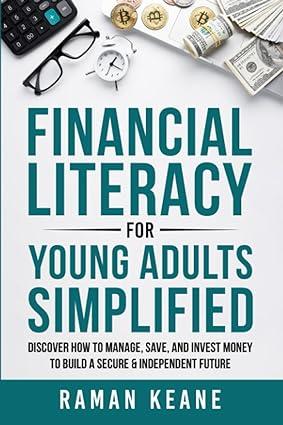Question
Assume that India is now an economic super-power. It does not levy any taxes and Government of India is able to borrow at 3% pa.
Assume that India is now an economic super-power. It does not levy any taxes and Government of India is able to borrow at 3% pa.
Mr JGU inherited 20,00,000 from his uncle. He puts all the money into his new business, JGBS Limited, which starts to generate an yearly revenue of 25,00,000 and earns him an operating profit of 3,00,000 per annum leading to a 15% return on assets. Mr JGU was happy to see the return on his asset go up from 3% to 15% and was satisfied with it. JGBS continued to distribute all the earnings from the business as dividends because Mr JGU was able to generate the same 15% return through other investments outside of the business and believed that the diversification reduced his risk.
- What is the value of JGBS? [2]
However the business faced a downturn as the economy slowed down. Mr JGU realizes that JGBS return on assets reduced sharply from 15% to 12% when revenue fell marginally to 24,00,000. He did not like the sharp decline in his dividend earnings and wanted to understand the cause so that he could fix it. He consulted with BBA Consultants. They advised that JGBS has a very high fixed cost. If JGBS wanted to reduce exposure to decline in sales it needed to change the operating model to make more of its costs variable.
- What is the fixed cost of JGBS? [4]
However, the economy revived quickly and JGBS improved its performance back to a revenue of 25,00,000 and a 15% return on assets. JGBS buyer expanded its business and wanted JGBS to add capacity to meet the increased requirement. It was decided that JGBS will buy more efficient machinery even though it would cost more. The total cost of the new factory would be 25,00,000. It would generate an improved operating profit margin of 13.5% (the operating profit margin of the old factory was only 3,00,000 / 25,00,000 = 12%) but return on assets would drop to 13.5% due to the higher capital expenditure for efficient technology. Mr JGU liked the plan for the new factory because it would make JGBS a market leader for its product and improve its competitiveness. And given JGBS track record of running this business successfully, he felt very comfortable on the operational aspects of the new factory. Since JGBS was fully owned by Mr JGU, and had never taken debt, it was assumed that Mr JGU would fund the new factory through fresh equity into JGBS.
- Should JGBS and Mr JGU go ahead with the second factory? [2]
When Mr JGU reviewed his personal finances he realized that he could not fund all of the 25,00,000 required to execute the project. The CFO of JGBS then hired BBA Consultants for help. BBA Consultants advised JGBS that they can raise debt from a bank to fund part of the new factory. Given the successful track record of JGBS first factory the CFO was able to get the bank to agree to lend 15,00,000 for the second factory at 7.75% p.a. to be compounded monthly but payable annually. The bank was to be repaid at the end of 10 years. The bank also required that JGBS raise equity for the remaining cost of the project. Mr JGU was able to provide the remaining cost of the project.
- Should JGBS go ahead with the project? [1+3]
However, before proceeding with the second factory, Mr JGU was unhappy about his own returns. He had been earning 15% on his capital in the first factory and would like to earn the same return on his investment in the second factory. He was disheartened to note that the second factory would only generate a return on asset of 13.5%.
- Is he correct in being disheartened? If you are part of BBA Consultants, what explanation and advise would you give him? [3]
Finally the second factory was set up. Both factories were operating steadily and business was good. JGBS continued to pay out all net income as dividends to Mr JGU who continues to earn 15% on his other investment portfolio.
Mr JGU was now contemplating starting a new business. He needed to raise money for the new business. While he liked the steady dividends from JGBS, he was open to selling 40% of JGBS equity to a partner. He called in BBA Consultants for advise. The Consultant noted that Mr JGUs opportunity cost was steady at 15% so only one of the various approaches to valuing a levered company seemed appropriate. He used that approach.
- Name the approach selected by the consultant. [1]
- What would be the value of equity in JGBS now? [3]
- How much could he raise for his new venture if he sold a 40% stake in JGBS? What would be the value of his remaining stake in JGBS? [1]
Step by Step Solution
There are 3 Steps involved in it
Step: 1

Get Instant Access to Expert-Tailored Solutions
See step-by-step solutions with expert insights and AI powered tools for academic success
Step: 2

Step: 3

Ace Your Homework with AI
Get the answers you need in no time with our AI-driven, step-by-step assistance
Get Started


